The other morning Buggato and I did a photo outing to the head of the Neuse River in Raleigh, an area called ‘Falls of the Neuse’ even though the falls have been replaced by a dam and spillway now. We hadn’t been down there in a while, and figured this was a decent time, but hadn’t counted on the flow being higher than normal, which prevented wading across to other photo opportunities. Nonetheless, we managed to snag a few images.
First thing in the morning, the lower overnight air temperatures (it got down to around 15°C or so) combined with the more stable water temps meant a lot of vapor rising from the water. A lot of vapor.
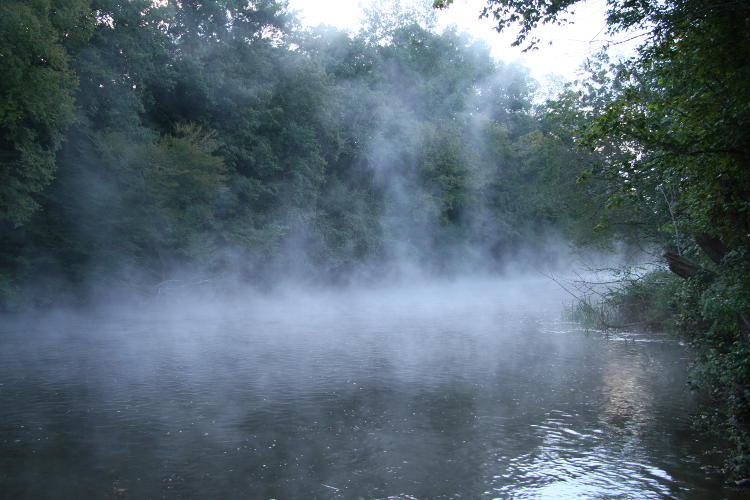
In fact, that doesn’t do it justice at all, so I’m glad it occurred to me to shoot a brief video clip, because the motion works much better.
I would have loved to have put the kayak in to go drifting through that, but there was a small catch: the current is fast enough that coming back upstream would be a strenuous undertaking, to say the least. I believe the various water excursion companies that put in right there for day outings actually pick up their clients much further downstream, allowing them to simply ride the current. And yes, that’s traffic noise you hear in the background, an unfortunate aspect of far too many ‘natural’ areas around here; there are two roads crossing the river not far enough away. But you also hear the clicking of Buggato’s shutter.
There are several places where you can do scenic compositions, but for some reason I’m fond of revisiting versions of earlier ones that I’ve done, back at the turn of the century when I’d first start exploring the region.
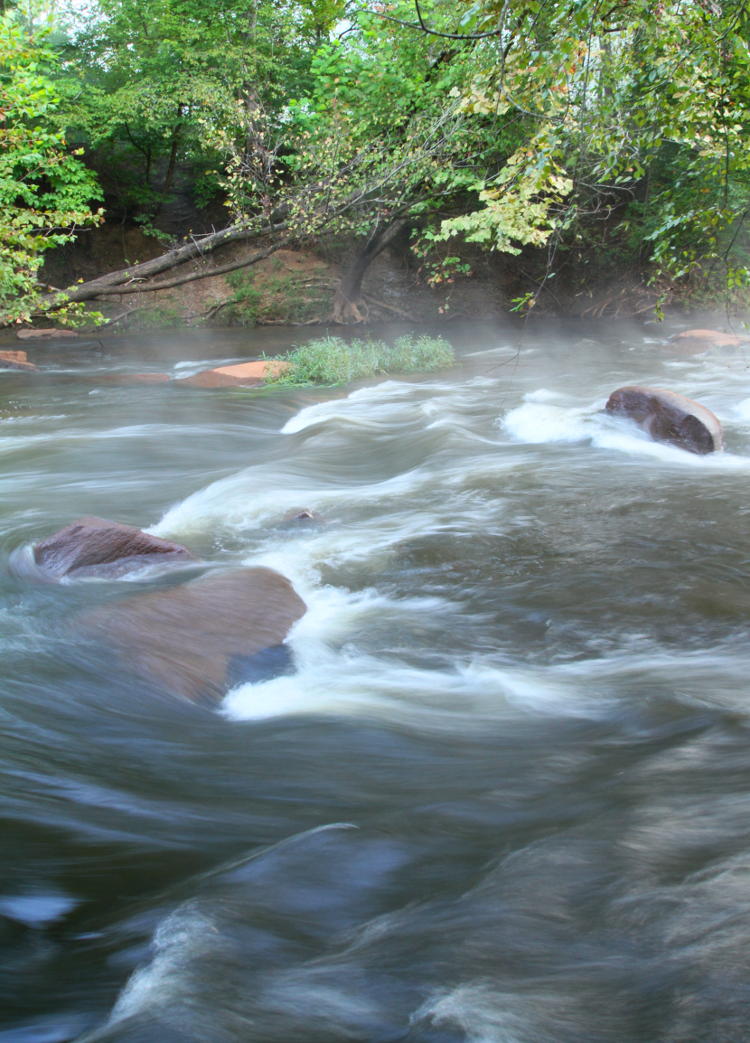
With a stabilized lens and the amount of flow, I was able to handhold the camera for the necessary 1/3 second to blur the water a little and still not have camera motion in the shot, so this experiment turned out well enough. The footing within looks treacherous, and it was to some degree because the rocks themselves would get a coating of silt and algae under the surface, making them the slipperiest surfaces imaginable, but for the most part the hazard of wading that day was in exceeding the depth of one’s shorts, or finding a sudden hollow that would send you stumbling, not a good idea with camera equipment. Thus the higher water narrowed our exploring area down by half, and the cooler air kept the snakes and lizards and most of the insects out of sight, so the bulk of what we saw were the herons.
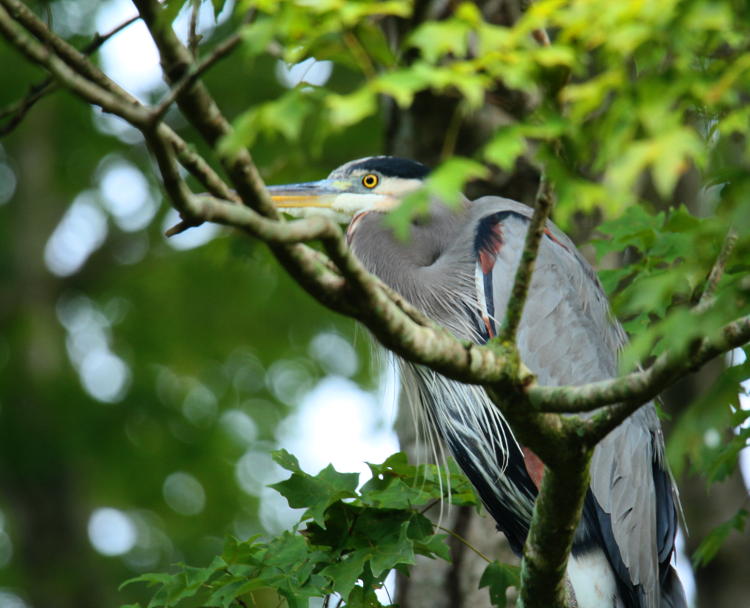
Used to the plethora of fisherfolk that visit, the great blue herons (Ardea herodias) are fairly mellow there and will often perch not too far away, close enough to allow the use of a long lens for tighter portraits. This one had flown in as we stood on the banks, conversing quietly but by no means hidden or undetectable to it. From time to time it checked on us, wary of our presence but not enough to flee because of it.

You gotta admire the skull structure that allows such downward visibility.
We worked our way upstream, taking paths that skirted the water for short stretches because the erosion and fluctuating water levels prevented contiguous paths along the river. I noticed that an old tree that had always been overhanging the water on previous visits had finally succumbed to gravity and entropy, but in looking back through my folders I realized it had occurred before our visit last year, and I’d simply forgotten about it. Its decay is an interesting comparison, anyway – here it is from last July:
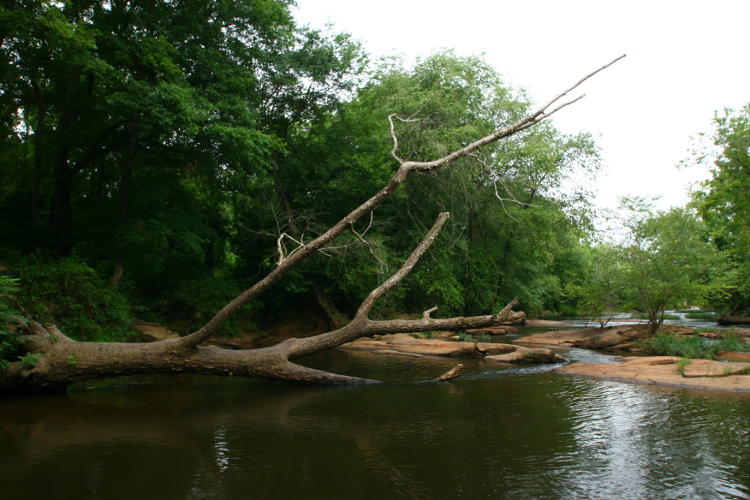
… while here it is a few days ago, still decorated with the mist from the morning:
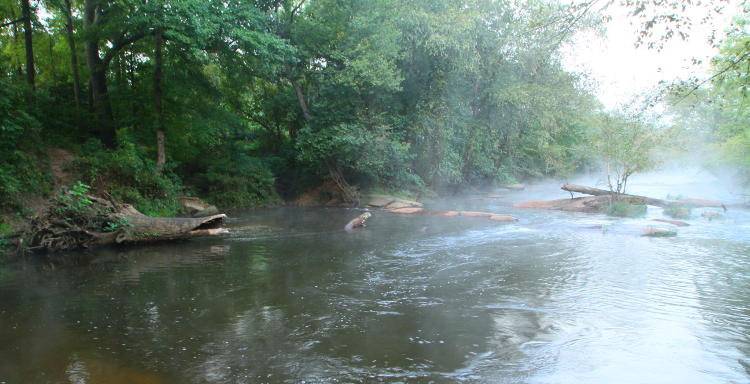
The vapor really did persist for quite a while, but it took the sun a long time to rise above the shrouding trees and hit the water, so not too unexpected I guess. We worked our way along, and not very much further up had another heron that was posing nicely at the water’s edge.

I should note that no where else was there fog that morning; this is all the effect of the warmer water, and did not carry out of the small valley that held the river. Nice atmosphere, anyway. I did a few frames at a shorter, wider focal length for setting and conditions (being fartistic, doncha know,) but then went in for the detailed portraits.

I think I tweaked contrast just slightly higher for this, nothing significant. I’d also stalked along the bank to frame the heron against the background rocks a little more creatively, and like how the lines back there accentuate the heron. Little things, little things.
And then, only a little further on, another that alighted in a tree as we watched.

To be honest, there were small territorial disputes among the herons all along the river, causing more shifting and short flights than any perceived threat of approaching humans, so I can’t say for certain if any of these were the same as photographed earlier. Meanwhile, we’re way too early for fall colors here, but this particular tree was changing for whatever reason, so the tighter framing gives the impression of more color in the region than reality, accentuating the patches of brown that herons can show when seen from the right angle. Maybe five to seven meters above the water here, this one has left the fog below. I just wish it hadn’t posed against all those twigs.
We pursued other subjects as well – what we could find, at least, which wasn’t a lot. Later on as the day warmed there might have been more going on, but the vapor would have been gone then, so you know, trade offs.
We found no less than three motherly green lynx spiders (Peucetia viridans) guarding their egg sacs, but still too early to see young’uns.
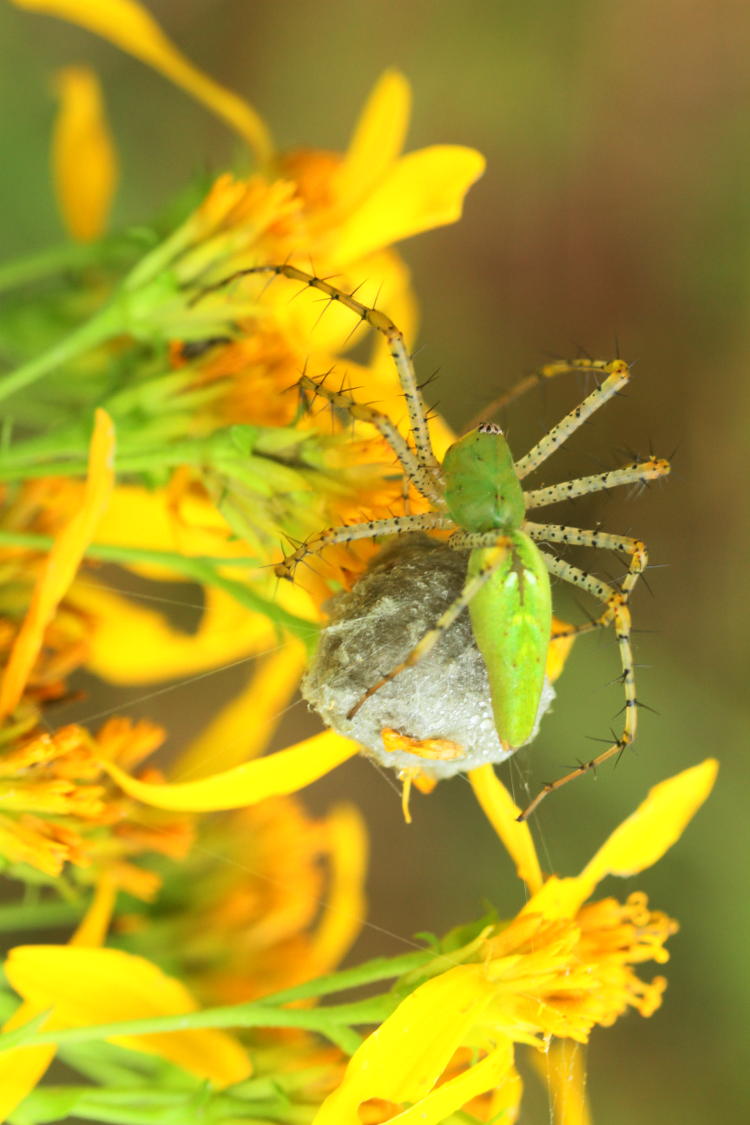
Green lynx spiders are ambush hunters, not relying on webs to trap their prey, and usually sit at the edges of flower blossoms (about like this) to await the approach of tasty pollinators. But at this point, with the eggs laid and waiting, I’m not sure they eat at all – their genetic purpose has almost been served, the offspring to continue their lineage, and in my experience they’ll hang around to run interference for the newborns for a while, then vanish, likely dying, so they may not eat at all except to help provide something for the hatchlings. I have none in the immediate vicinity to keep checking on, but a few years back when I had three mothers in the yard, I never saw them with prey after the sac was done.
The chilly morning also meant some of the bees were sleeping on the flower heads, a common sight as the nights get cooler.
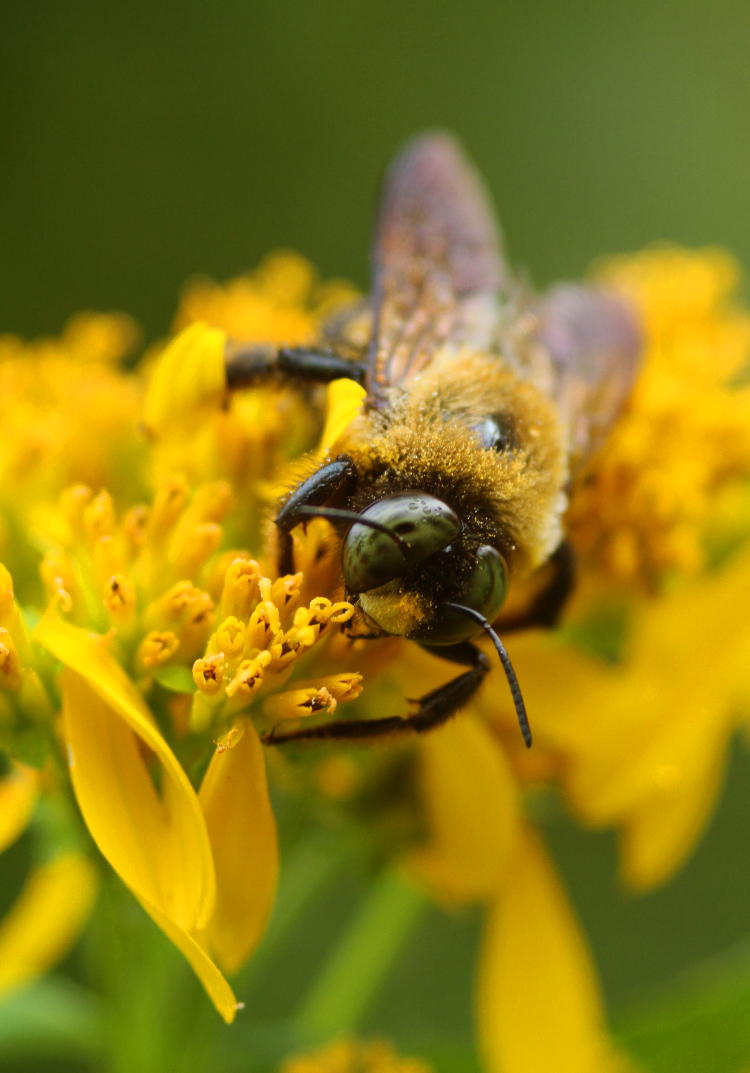
Much as it looks active here, it was barely twitching as we leaned in close, too sluggish this early to do anything (not that the carpenter bees get too concerned with close approaches anyway.) To the best I can determine, this is a southern carpenter bee (Xylocopa micans,) because of those green eyes, but as I’ve said before, I just takes the picchers – someone else can take responsibility for positive ID. That’s out of my pay scale.
[We’re not going into what is actually within my pay scale, because it would embarrass us all.]
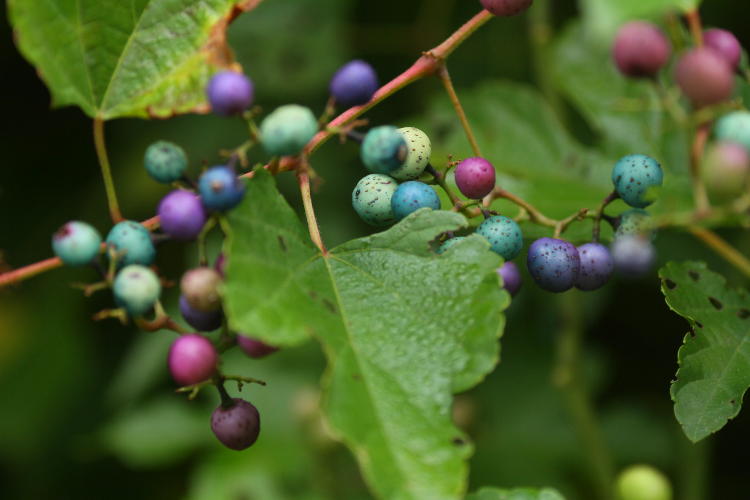
The porcelain berries (Ampelopsis brevipedunculata) are coming into season, which means a display of varied colors not typically seen among any other plants. If you look up porcelain berries, you’ll find that they’re invasive (an Asian native) and considered a weed, but like many ‘weeds,’ I happen to like their appearance and don’t really care about the horticultural distinctions – longneedle pines are natives and shitty-looking, annoying trees, so, yeah, whatever. I still may plant some in the yard.
And finally, one last heron found as we were wrapping up for the day. This one was a little distant downstream, but posed regally on a decrepit stump, gaining just a hint of edge lighting from the sun attempting to break through the horizon haze. I thought it worked well to finish off the session.




















































